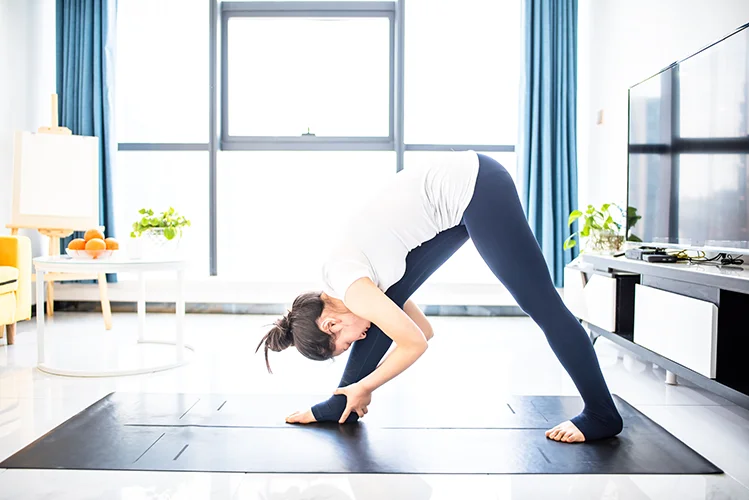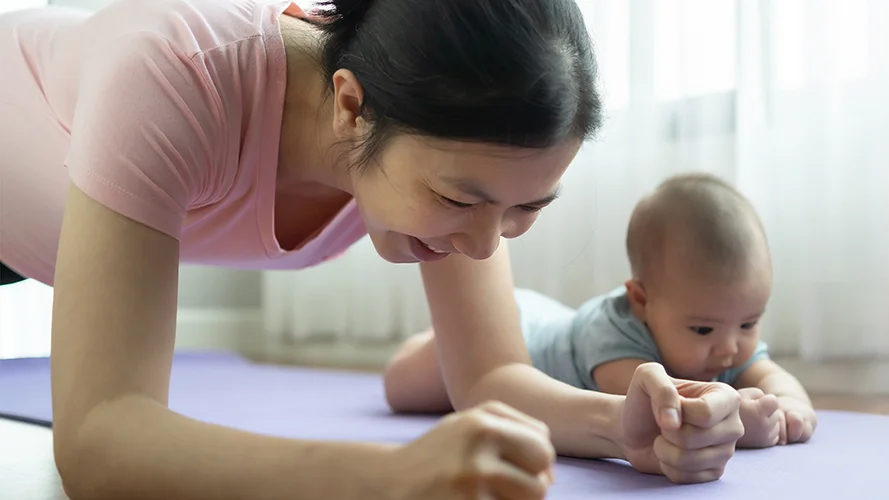Topics
Postpartum Period
A woman’s body undergoes profound transformations, structurally and hormonally during pregnancy. The postpartum period, or postnatal period, is the period that immediately follows childbirth.
The postpartum period is typically regarded as the first six weeks after giving birth and is characterised by physical adjustments as a woman’s body recovers from pregnancy.
During this period, a woman may experience symptoms such as a sore vagina, vaginal discharge (lochia), breast engorgement, uterine contraction, and emotional challenges such as feelings of anxiety and postpartum blues.
Benefits of Postpartum Exercises
A woman’s body experiences remarkable changes during pregnancy to accommodate the growing foetus.
Postpartum exercises are beneficial in the recovery and healing of a mother’s body, especially in strengthening and toning her abdominal muscles, increasing her energy, preventing urine incontinence, promoting the losing of additional weight gained during pregnancy, relieving stress, and promoting better sleep for new mothers experiencing disrupted sleep patterns.
Postpartum Exercise Guideline
Always consult your healthcare provider before starting any postpartum exercises after childbirth. The timeframe to start exercising after childbirth differs depending on the type of delivery, the individual’s recovery, and doctors’ advice.
After a C-section delivery, which is a major operation, it is recommended to wait about six to eight weeks before engaging in exercises. However, daily walks are encouraged.
After a normal delivery with stitches, a mother should be able to resume exercising as soon as she feels ready. Low-impact and gentle exercises, like walking, pelvic floor exercises, and gentle stretches are recommended.
Gradually build up the intensity of their exercises over time and listen to your body and stop exercising if you feel any pain or discomfort.
5 Postnatal Exercises to Consider
Engaging in postnatal exercises may help a mother to rebuild her strength,
tone up her muscles, and improve her overall well-being.
| Type | Details |
| 1. Postpartum pelvic floor exercises |
The pelvic floor muscles provide support to a woman’s bladder, preventing it from dropping down (prolapse). Furthermore, they help control bladder and bowel function, preventing leakage of urine, or faeces. Pelvic floor exercises, or Kegel exercises, focus on strengthening the pelvic floor muscles to prevent incontinence, strengthen vaginal muscles, and prevent accidental passing of stool. To perform pelvic floor exercises:
|
| 2. Happy baby pose |
To perform happy baby pose:
|
| 3. Postpartum exercises for tummy |
Pelvic tilt exercises help to strengthen the abdominal muscles as they become stretched and weakened during childbirth. To perform pelvic tilt exercises:
|
| 4. Postpartum exercises for diastasis recti |
Diastasis recti is a condition that occurs when the two rectus abdominis muscles are separated by an abnormally wide distance during pregnancy. The toe tap exercise can help activate the transverse and rectus abdominis to support core strength following childbirth. To perform toe tap exercise:
Heel slides can help enhance core stability while reducing stress on the rectus abdominis. To perform heel slides:
|
| 5. Postpartum fitness exercise |
Whenever you feel ready, especially after a natural birth, start going out for low-impact exercises like walking. You can do so within days to weeks, depending on your delivery and recovery. Walking can improve circulation, mood, and endurance, helping you rebuild your strength, vitality and enhance your overall well-being. |
Tips to Consider When Starting Postpartum Exercise
To realise the most optimal results from postpartum exercises, start with gentle exercises like walking and pelvic floor exercises whilst supplementing them with gentle stretches, as soon as you feel ready. Ensure not to push yourself too hard too soon.
Allow your body time to heal after childbirth. Your body needs more time to recover before beginning a postpartum exercise routine. Start with low-impact exercises, like walking, swimming, deep breathing exercises, Pilates, and yoga.
Avoid high-impact exercises and lifting heavy objects to avoid increasing your risk of bone injuries, delayed wound healing, pelvic floor dysfunction, prolapse, and diastasis recti.
If you feel any pain and discomfort while engaging in exercises, do stop and consult your doctor. Most importantly, be patient and let your body heal.
Drink plenty of water before, during, and after postpartum exercising to stay hydrated and get adequate rest and sleep for optimal postpartum recovery.
Make an Appointment at Gleneagles Hospitals
The postpartum period is characterised by significant biological, psychological, and social change. Fortunately, the postpartum exercises shared above can help ensure a healthy recovery process.
Schedule an appointment today with the team of Obstetrics and Gynaecology specialists or physiotherapists at your nearest Gleneagles Hospital if you have questions about postpartum exercises.









